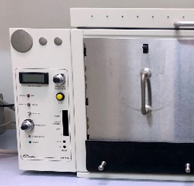In This Section
-
About
- Mission
-
Leadership
-
Departments
- Anesthesiology
- Basic Medical Sciences
- Bioethics and Medical Humanism
- Biomedical Informatics
- Child Health
- Dermatology
- Emergency Medicine
- Family, Community and Preventive Medicine
- Internal Medicine
- Neurology
- Neurosurgery at Banner
- Neurosurgery at Barrow
- Obstetrics & Gynecology
- Ophthalmology
- Orthopaedic Surgery
- Pathology
- Psychiatry
- Radiology
- Surgery
- Translational Neurosciences
-
Faculty
-
Office of Health Care Advancement
-
The College at a Glance
-
Strategic Plan
-
Accreditation
-
Events & Ceremonies
- Staff Council Advisory Group
-
Research
-
Community
-
Prospective Students
-
Current Learners
-
Residencies & Fellowships
-
Residency Programs
-
Fellowship Programs
- Addiction Medicine
- Advanced Heart Failure and Transplant Cardiology
- Advanced Endoscopy
- Aerospace Medicine and Surgery
- Cardiology
- Cardiac Electrophysiology
- Child and Adolescent Psychiatry
- Clinical Informatics
- Critical Care Medicine
- Endocrinology, Diabetes and Metabolism
- Maternal Child Health (OB Fellowship)
- Female Sexual Medicine
- Forensic Pathology
- Gastroenterology
- Geriatric Medicine
- Geriatric Psychiatry
- Hand Surgery
- Community Medicine
- Hematology and Oncology
- Hospice and Palliative
- Interventional Cardiology
- Maternal-Fetal Medicine
- Medical Toxicology
- Minimally Invasive Gynecologic Surgery
- Orthopaedic Sports Medicine
- Primary Care Sports Medicine
- Pulmonary and Critical Care Medicine
- Surgical Critical Care
- Sleep Medicine
- Structural Heart Disease
- Transplant Hepatology
- Vascular Neurology
-
Current Resident/Fellow Resources
-
Orientation Information
- Outgoing Resident/Fellow Resources
-
Program Leadership Resources
- GME Office
- Training Verification
-
Provide Feedback
- Visiting Residents
- Policies
- Cheryl O'Malley, MD
-
Residency Programs
-
Giving
-
Contact

The Active/Passive Avoidance system is a behavioral paradigm to assess fear responses, learning, and memory processes in rodent models. This test is based on the principle that animals can learn to avoid an aversive stimulus, such as a mild foot shock, by associating it with a specific environmental context or cue. The avoidance apparatus typically consists of a shuttle box or chamber divided into two compartments, one illuminated and the other dark. During the training phase, the animal is placed in the illuminated compartment and receives a mild foot shock upon entering the dark compartment, serving as an aversive stimulus. Key parameters measured include the latency to enter the dark compartment and the number of avoidance responses (staying in the safe compartment) during subsequent test sessions. The test can be conducted in active avoidance mode, where the animal must move to the other compartment to avoid the shock, or passive avoidance mode, where the animal must remain in the safe compartment. Test durations can range from a single trial to multiple trials over several days, depending on the experimental design.